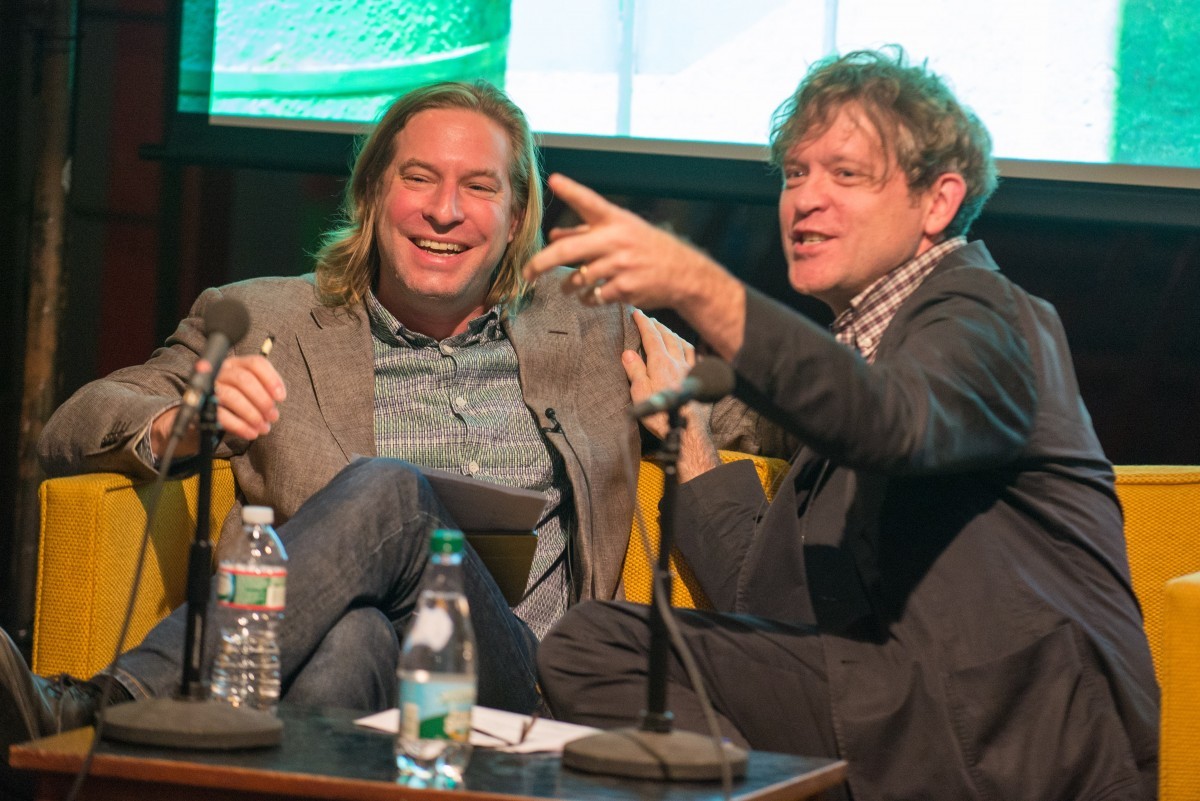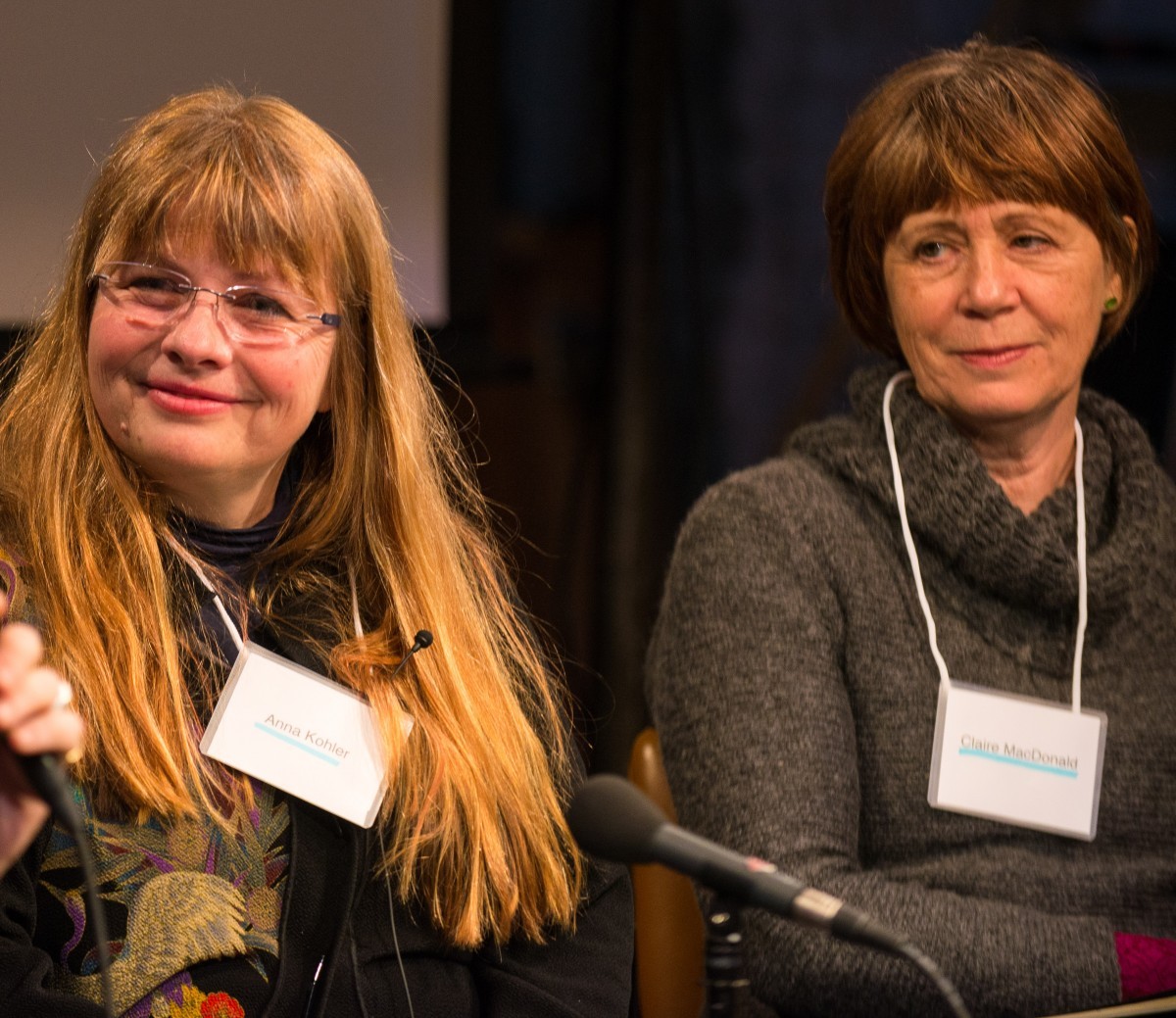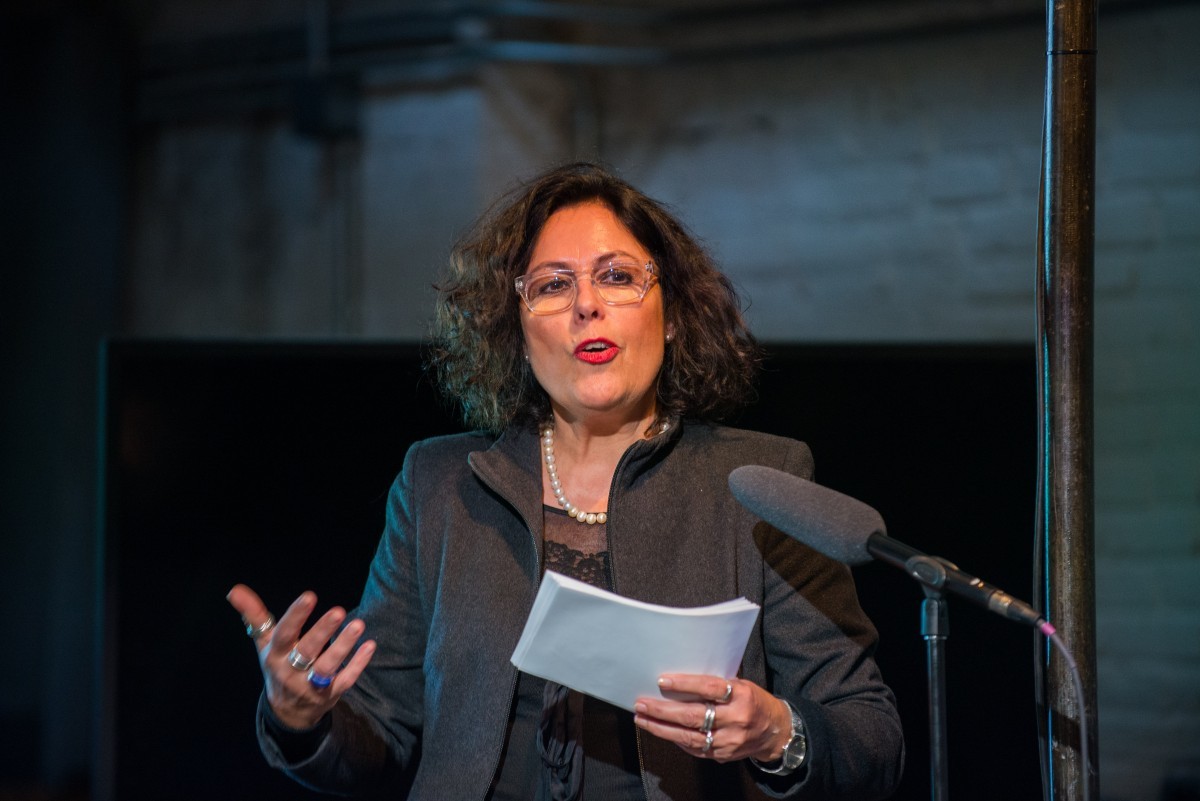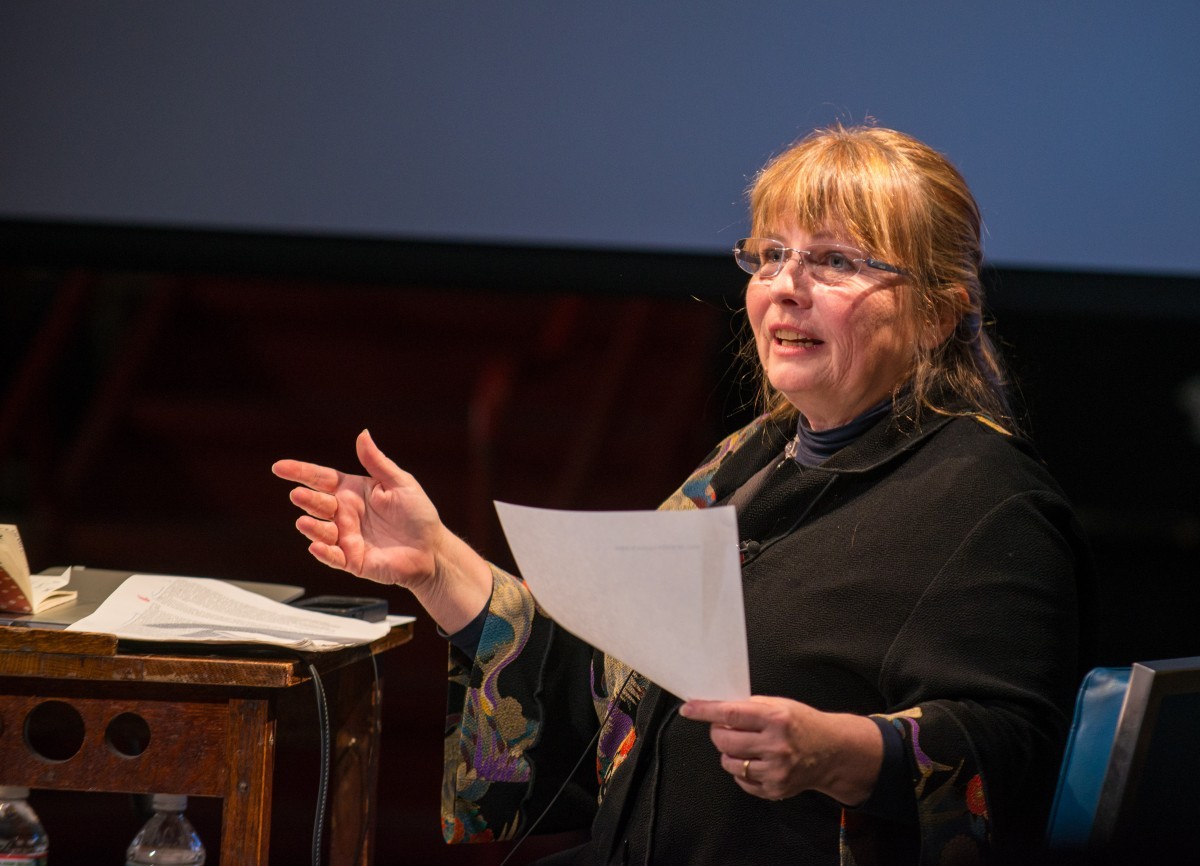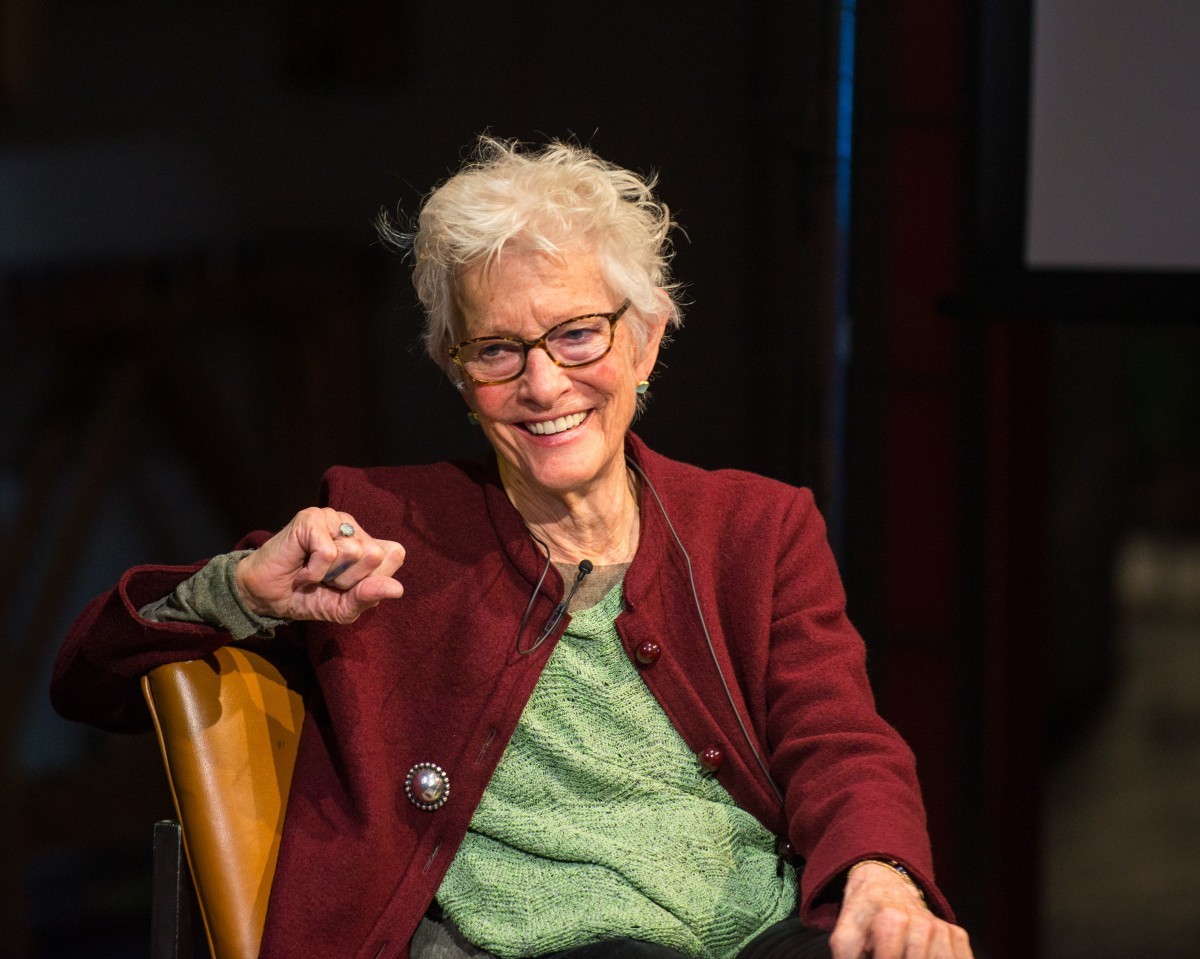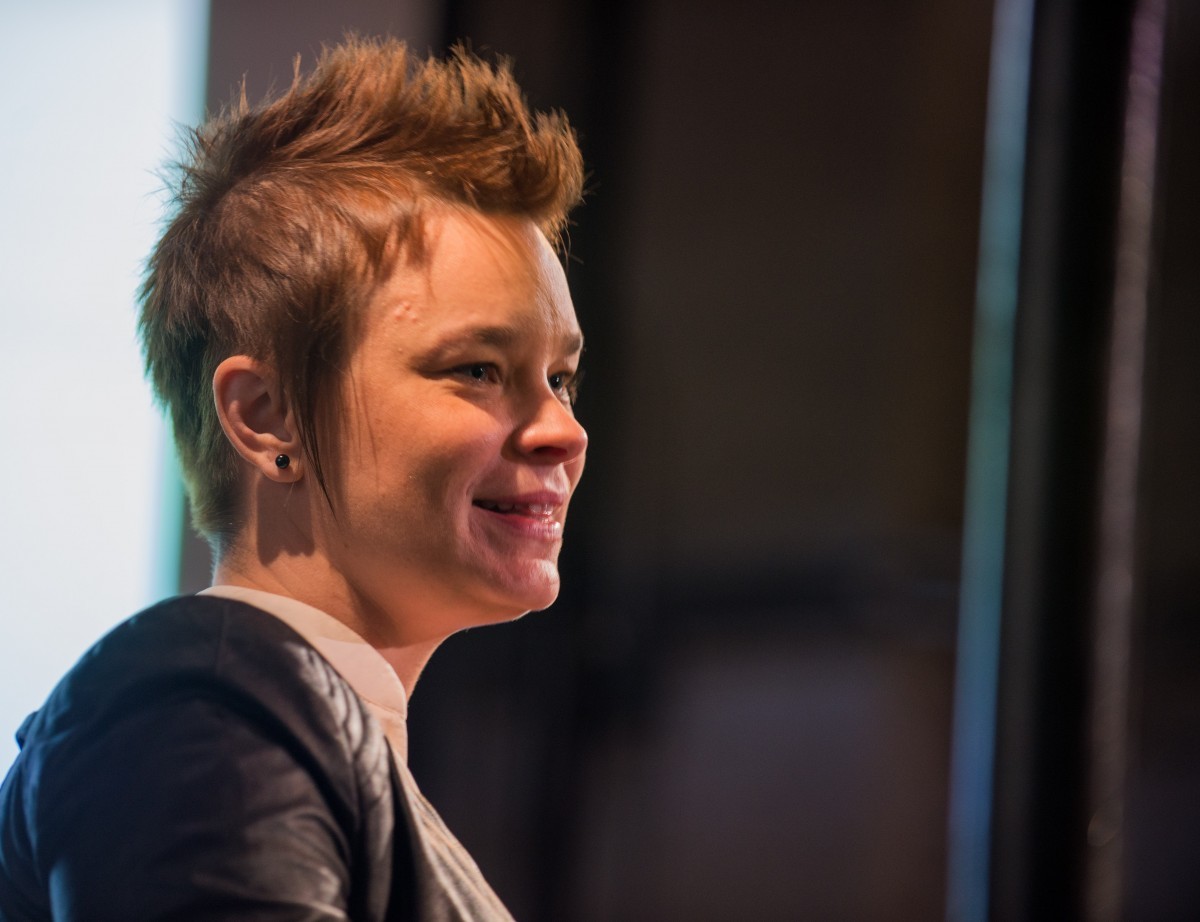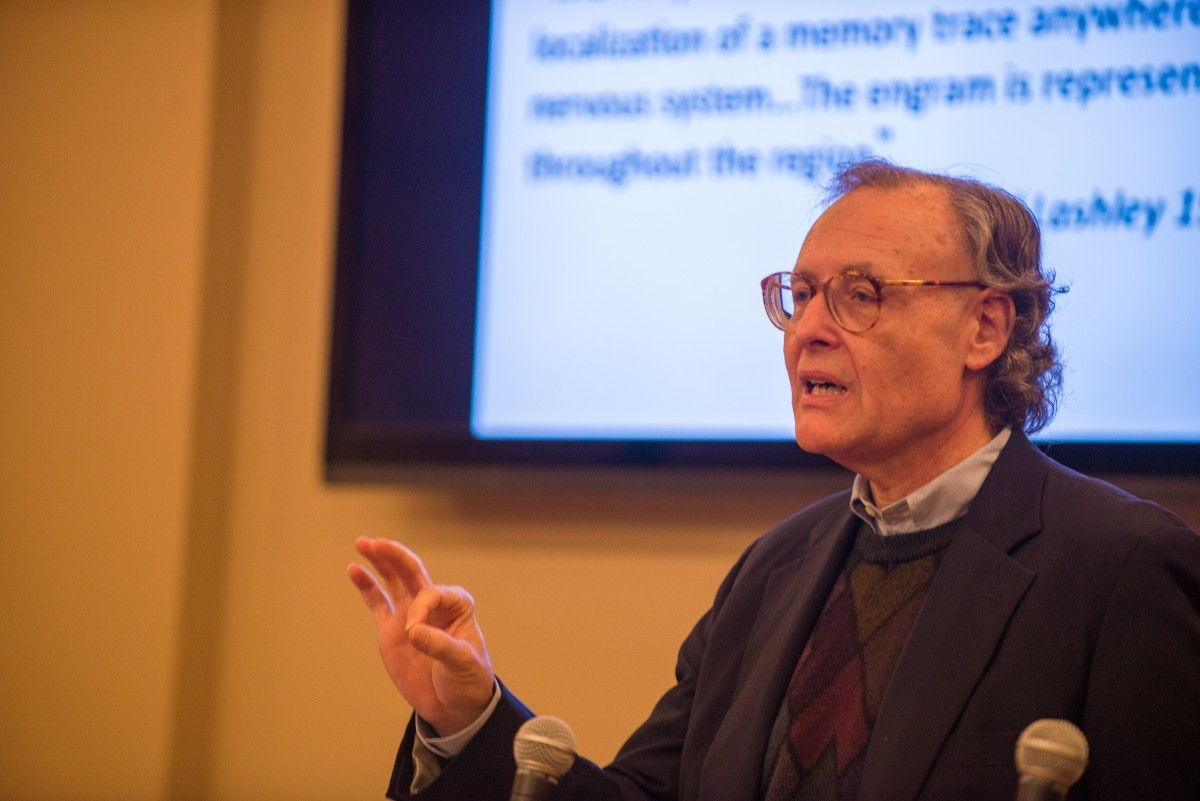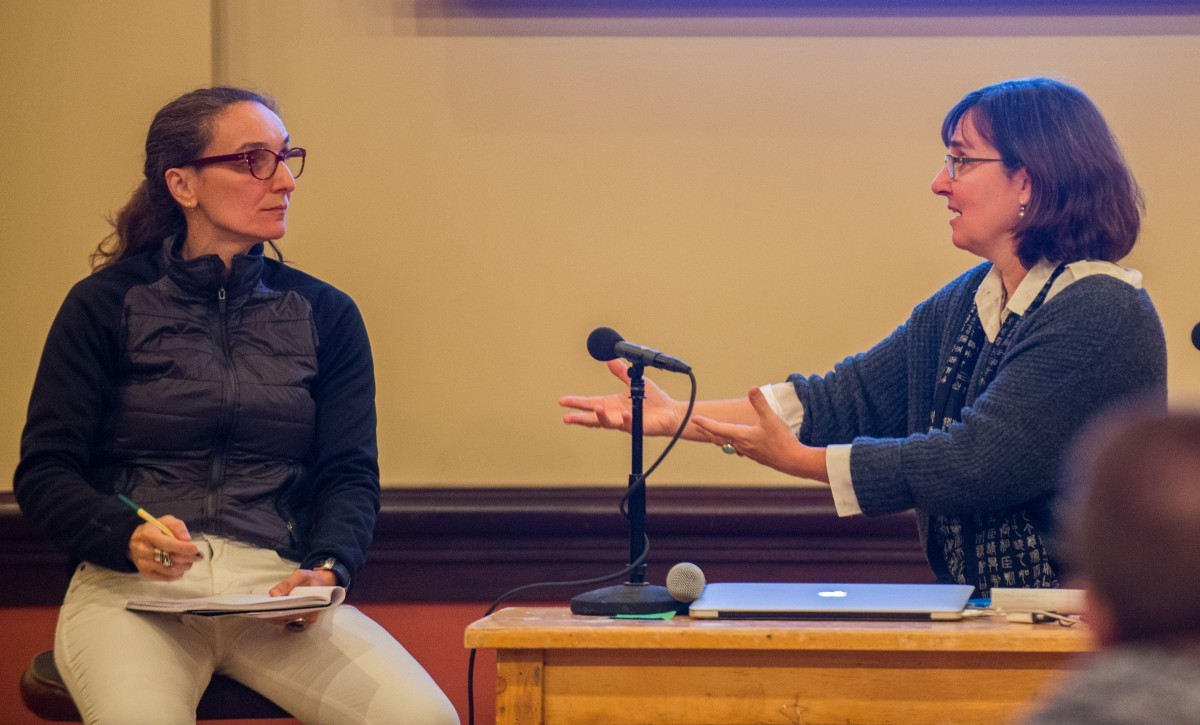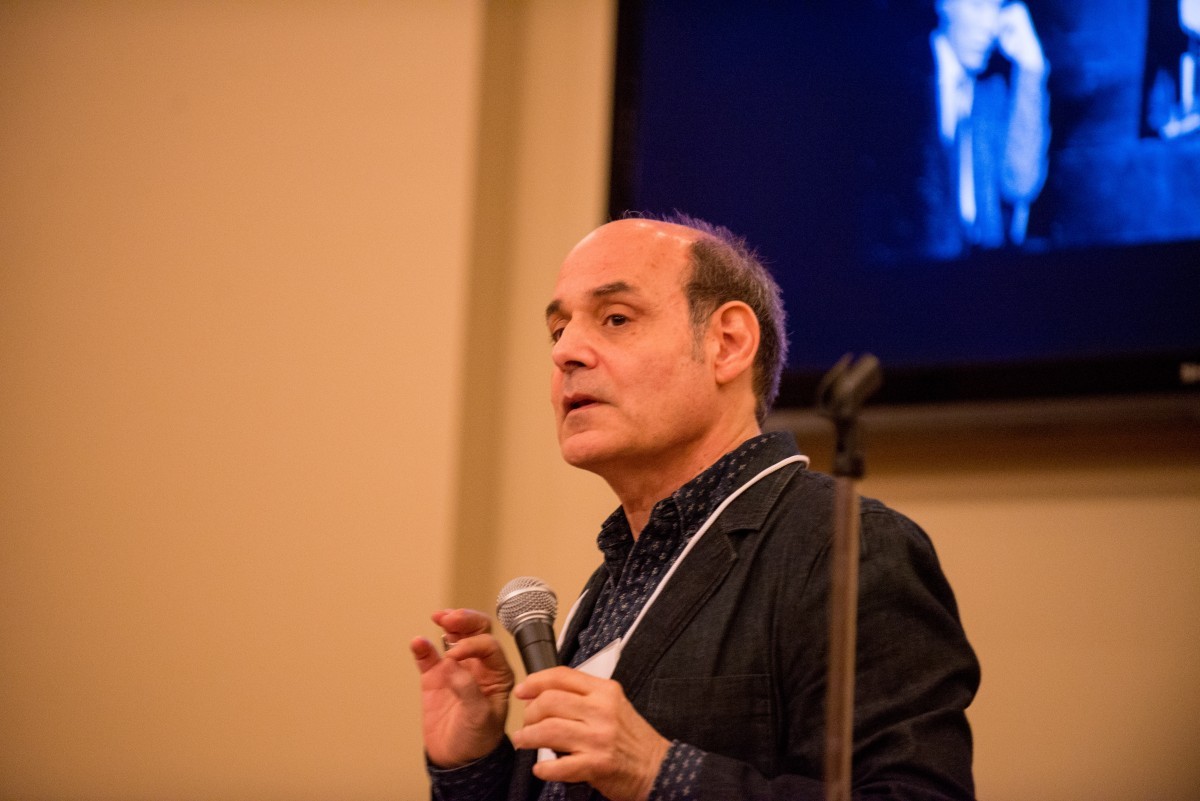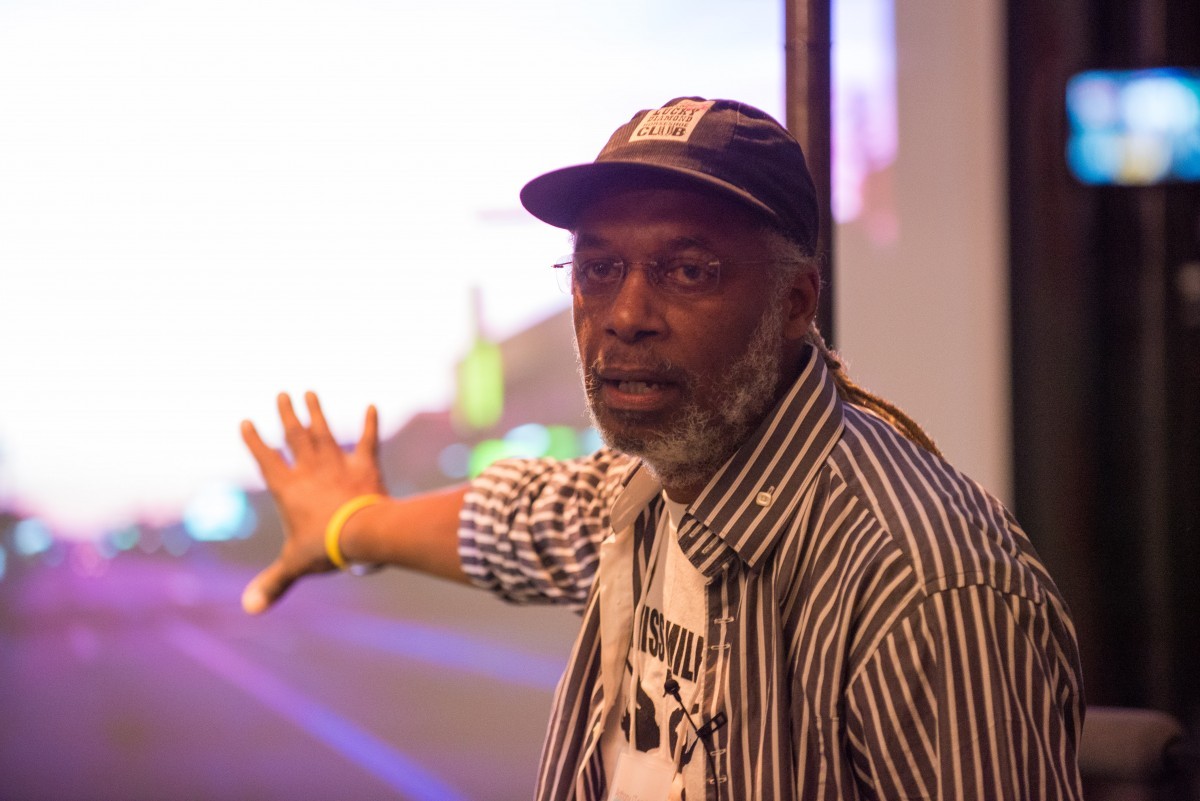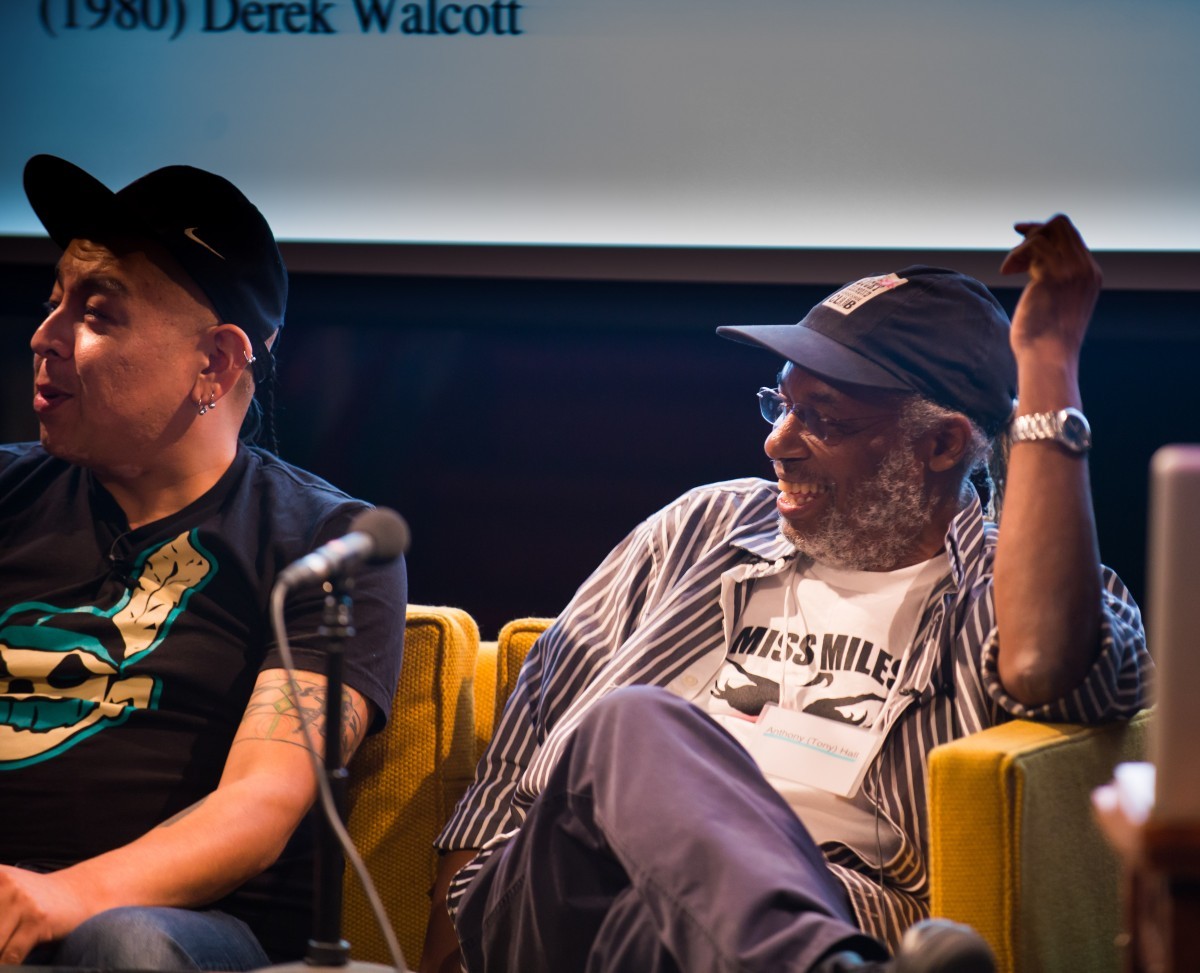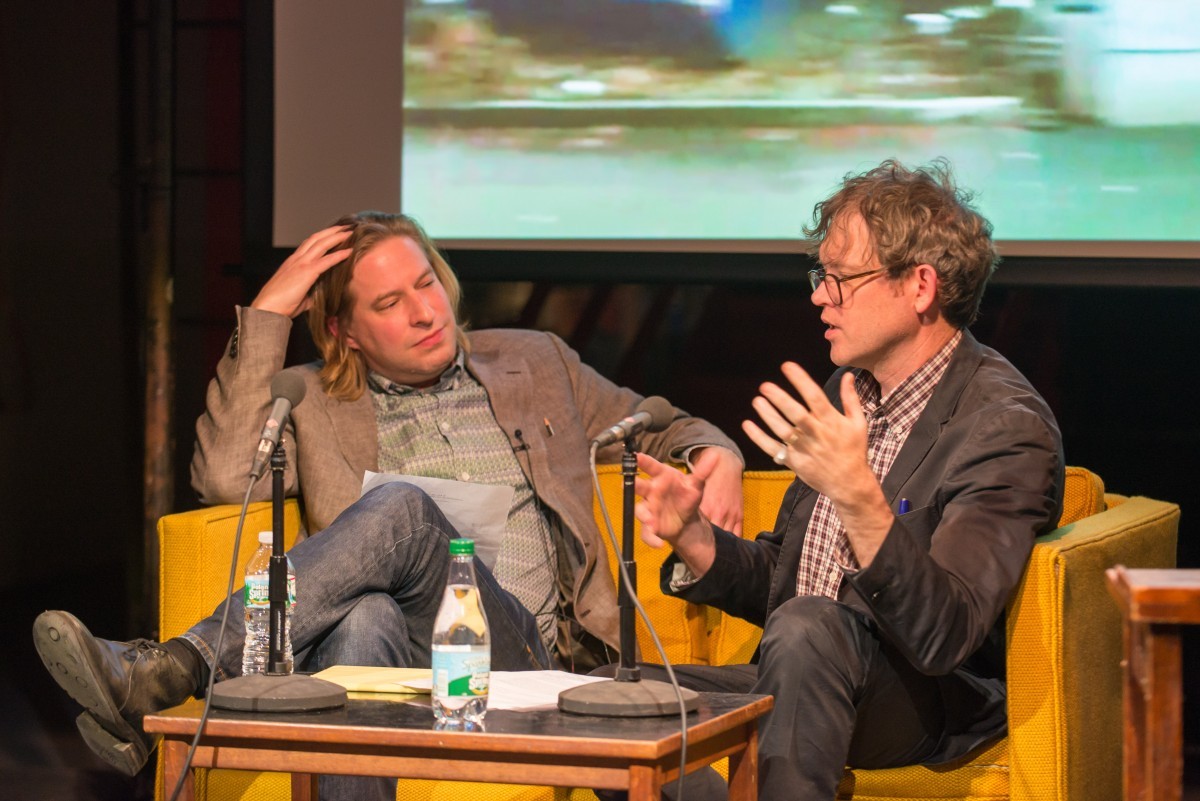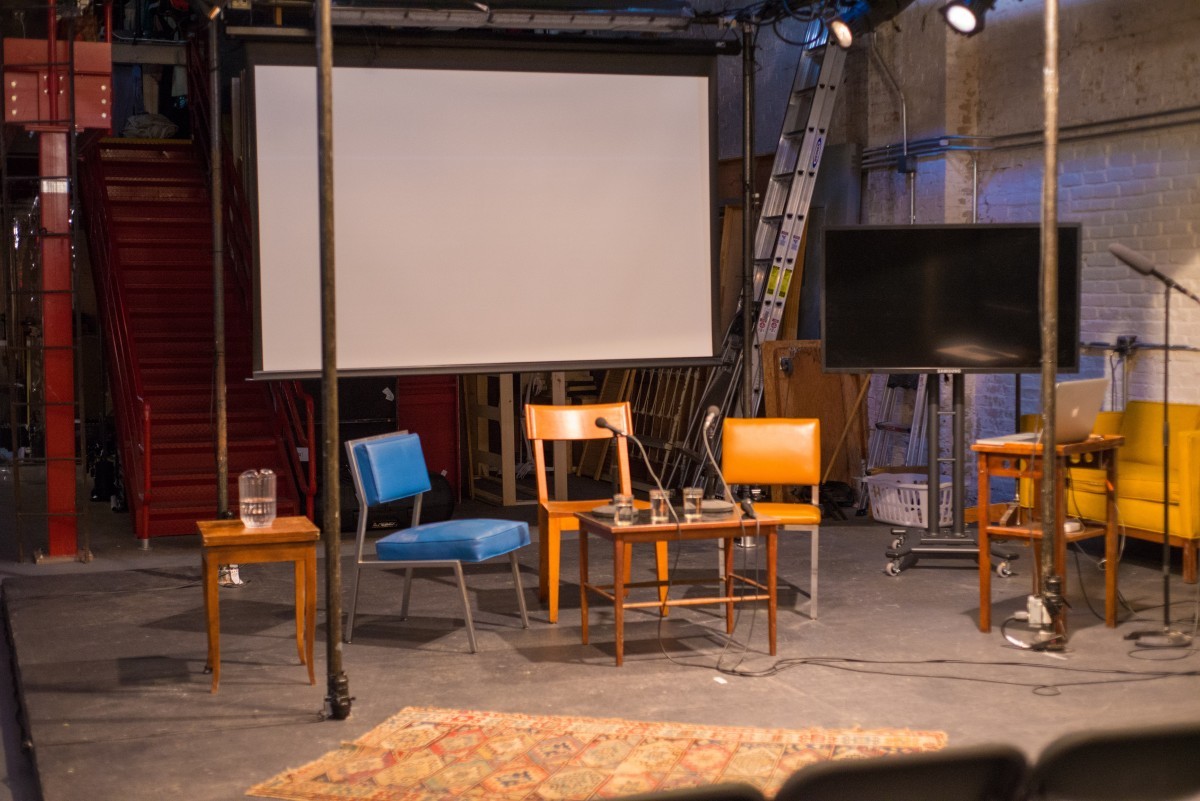Mnemosyne, “memory,” is the mother of all the Muses. “Infinite Record: Archive, Memory, Performance,” an international conference devoted to the continuous and living archive, organized by Anna Kohler and Jay Scheib (Music & Theater Arts, MIT), celebrated memory’s role as the matrix of the arts.
The intimate Rinaldi Theater space – with its racks of lumber, scenery flats, and prop shop trappings – set the tone for the two-day event, which fused the academic seminar de rigeur with the vibe of a happening. Thanks to the participatory nature of many of the presentations and the vision of the organizers, the symposium was not merely “a knowledge market where we buy and sell each other’s intellectual product,” to borrow a phrase from Karmenlara Ely of the Norwegian Theatre Academy. Jay Scheib and Anna Kohler both stressed that the symposium is a place for public thinking.
Through a variety of lectures, performances and panel discussions, participants investigated this peculiarly human concern for preserving the past. Presentations included a performance/interview by Joan Jonas (Professor Emerita, ACT, MIT) and Anna Kohler; live action painting with artist Bunky Echo-Hawk; stand up comedy with Ingrid Jungermann; an informative look at MIT’s own arts archives with MIT Executive Director of Arts Initiatives Leila Kinney (focusing on projects at MIT by Robert Lepage, Robert Wilson, Trevor Paglen, Olafur Eliasson and by MIT faculty Gediminas Urbornas and Nader Tehrani); a discussion and Q&A with MacArthur grant winning author/director John Jesurun; a collaborative performance by media artist and composer Arnold Dreyblatt, Maiya Geddes (Postdoctoral Fellow, McGovern Institute, MIT) and Anna Kohler with participating students from Theater Arts; and a talk by Professor John Gabrielli (Grover Hermann Professor in Health Sciences and Technology and Cognitive Neuroscience, MIT) on “Plasticity and Persistence of Memory in the Human Brain.” In addition, there were contributions by Jay Scheib, Claire MacDonald, Karmenlara Ely, Maria Magdalena Schwaegermann, Josh Lubin-Levy, Julie Tolentino, Serge von Arx, Rebecca Schneider, Eleonora Fabiao and Tony Hall.
The institutional partners for the Infinite Record project were the Norwegian Theatre Academy, Muthesius Kunsthochscule, York St. John University and MIT. The event in MIT’s Music and Theater Arts department was the fourth and final seminar in the series.
The Origin of the Infinite Record project
The project began in 2012, when The Norwegian Theatre Academy at Østfold University College in Fredrikstad convened an international body of professional artists, activists and scholars, including choreographer/dancer Wen Hui of Living Dance Studio, Beijing, media artist/composer Arnold Dreyblatt (CAST Visiting Artist) and dancer/theorist/director Louise Höjer (collaborator of Tino Sehgal) to confront creatively, critically and scholarly the idea of “the archive.” Through various media, this group addressed the impulse to preserve or carry forward historical remnants that burden or inspire.
The group embraced the winning 1999 International Essay Prize, “Dictionary of Winds,” by Ivetta Gerasimchuk, as the central text informing their discourse. The essay describes two opposing tendencies toward the act of archiving in the contest between the “chronists” and the “anemophiles.” The “chronist” on the one hand, precisely catalogues the world – preserving memory against forgetting. The “anemophiles,” on the other hand, spread their traces to the wind – they pollinate. The unchallenged figure in this “Dictionary of Winds,” is the “timekeeper,” reminding us of impermanence – the metronome of ephemerality, mortality, and death.
Joan Jonas and Anna Kohler: Ask Me, I’m Still Here, Part II
“Infinite Record” was punctuated with nontraditional presentations, such as Ask Me, I’m Still Here, Part II, a video installation and live performance by Anna Kohler and Joan Jonas (Professor Emerita, MIT). Their conversation took the shape of a storytelling game, which began as a hybrid of pre-recorded video in Joan Jonas’s New York studio and live spoken word by Anna Kohler.
When the real Joan Jonas took the stage, replacing her video surrogate, she and Anna Kohler shared jokes, memories and anecdotes of Jack Smith, Spalding Gray, the Wooster Group and the East Village in its heyday of performance art, using terms from “The Dictionary of Winds,” as prompts. These paper fragments were then clipped to a clothesline at the front of the stage. In this novel interview format, Joan Jonas cued videos of her past works to illustrate stories about their creation.

John Jesurun on Chang In a Void Moon as Living Archive
Working as a data analyst for CBS, where he was sentenced to four hours of primetime television viewing daily, and later for the Dick Cavett show, where he was impressed by the integrity of the unedited interviews, Jesurun incorporated some attributes of television into his live performances at the Pyramid Club in the early eighties. For instance, he presented a filmic perspective by mounting actors on the wall to simulate aerial shots. Also, he adopted the serial format for stage productions.
His live serial Chang In a Void Moon has been running continually since 1983, and with many of the same actors. Rather than documenting the experience through video or photographs, Jesurun offered alternative ways to think about performance archives, such as the scripts with their stray doodles and notes, or the actors themselves form a living archive. Jesurun shared, “I cherish that way of making work with no concern for archiving it, for documenting it. The audience is the archive; their collective shared experience is better than a photograph.”
Serge von Arx and Jay Scheib in Dialogue
The archive that is oriented to the past is useless; it must be a tool for the future. Jay Scheib and Serge von Arx trafficked in some heady terrain about the performance archive in the face of its impermanence — sets are built cheaply, not made to last, for example. While they discussed topics like scenography as “sensory storytelling though architecture” and scripts as “dead pages,” video footage (shot from a car window) of the streets and architecture of continental Europe reinforced the notion that theater can, and should, be hurtling forward through space and time. According to Jay Scheib,”Roland Barthes may have pronounced theater dead, but you can’t call it useless.” Scheib shared how his process since 9/11 has involved using live feeds because he feels that “the shock of pointing a camera at something,” brings “the question of aliveness” to the foreground.
Leila Kinney on Hidden and Future Archives of Artists at MIT
Leila Kinney, CAST Director, highlighted some examples in the history of the Arts at MIT in which Visiting Artists used archival material as the basis for new work. For instance, “Liquid Archive” by Nader Tehrani and Gediminas Urbonas, featured at the Festival of Art, Science & Technology (FAST) in celebration of MIT’s 150th anniversary, referenced the early days of teh Center for Advanced Visual Studies (CAVS) when György Keppes and his colleagues created work oriented to the Charles River. “Liquid Archive” was comprised of a barge on the Charles with projections from the CAVS archives.
Kinney also cited Trevor Paglen’s “The Last Pictures,” a project he developed during his residency at MIT through the Visiting Artist program in 2011-12. Paglen worked with materials scientists at MIT to micro-etch 100 photographs on a disc, encased in a gold-plated shell that will survive the rigors of space for billions of years. The images chosen for “The Last Pictures” tell an impressionistic story of uncertainty, paradox, and anxiety about the future.
Another notable example Kinney described was 2013 McDermott Award winning artist Olafur Eliasson’s web-based project “The Uncertain Archive.” This website departs from chronological organization and instead juxtaposes images of Eliasson’s work based on categories chosen by the viewer, resulting in serendipitous encounters.
“Keep everything. It may come in useful.”
Quoting John Cage, Claire MacDonald reminded the audience, “Keep everything. It may come in useful.” She then raised the question whether or not it is sufficient to pass things on simply by passing things on.
As the participants explored the relative merits of the archiving “chronists” and the pollinating “anemophiles,” they viewed the choice between these two approaches not as an either-or proposition, but one that — in the spirit of that vital rule of improvisational theater — called for a “Yes! And….”
This program was supported in part by the Norwegian Artistic Research Program, The Council for the Arts at MIT, Deborah K. Fitzgerald, Dean of the School of Humanities, Arts & Social Sciences, and the Program in Theater Arts, Music & Theater Arts, MIT and the Center for Art, Science & Technology (CAST).

